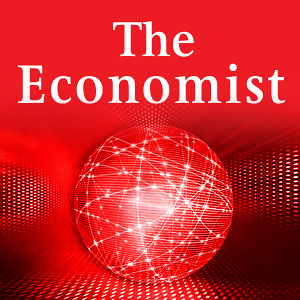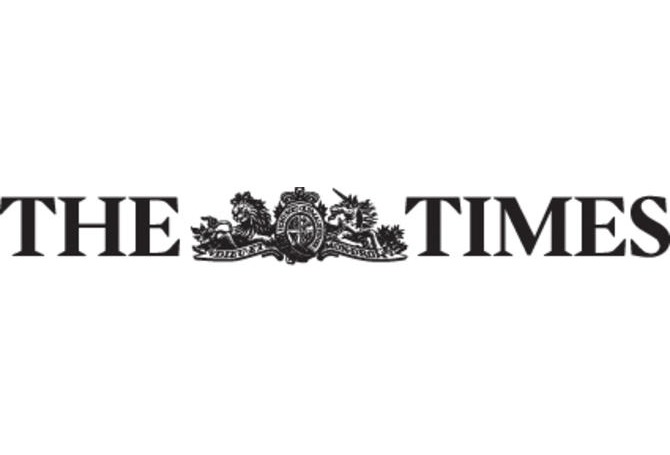J. R. MCNEILL
Neither Thucydides, Gibbon, von Ranke, nor Braudel ever cited a paper appearing in Geophysical Research Letters. They did not worry themselves about fluctuations in the Siberian High or the Southern Oscillation. The vast majority of more recent historians also remained untroubled by such concerns. However, in the past five years, a handful of highly distinguished historians have come out with new books that put climate at the center of historical explanation. What on Earth is going on?
Perhaps a historiographical wheel is turning. A century ago, historians and other scholars of human affairs often felt quite comfortable turning to climate as explanation for both broad patterns and twists and turns in history. Those who saw in climate adequate explanation for the vigor of some peoples and the stupor of others followed in the intellectual traditions of Montesquieu, Ibn Khaldun, and Aristotle. They looked to climatic regimes to help make sense of the diverse fortunes of nations. This outlook was deeply ahistorical: the climate that allegedly made people in southern China listless a century ago is very much the same as it is today, when the people of southern China are among the most economically dynamic around. Arnold Toynbee, writing in the 1930s, believed that the bracing climate accounted for the economic vivacity of the north of England, whereas the softer climate of London and the home counties did not provide sufficient stimulus in the south, which lagged behind. This looks silly 80 years later, not least because it’s the north of England that lags behind today. Toynbee also thought the challenging climate of New England explained the domination of US history, as he saw it, by New Englanders. Such views, emphasizing the power of climatic regimes in human affairs, were never universally held—Hegel, among others, objected strenuously to them—but nonetheless made sense to many leading lights of the historical profession before the mid-20th century.
Climate change, on the other hand, never seemed quite as useful to historians. Some geographers, most famously perhaps Ellsworth Huntington, argued that pulses of drought accounted for the folk migrations of various pastoral peoples across Asia. His argument was taken up here and there, and others like it occasionally found favor among historians. But by and large, climate change did not figure prominently in historical explanation. No doubt this was in part because no one knew enough about past climate to make much use of it. And few people, whether historians or not, supposed that climates did change very much, or fast enough, to make much difference to human history. As late as the 1960s, the great French historian Emmanuel Le Roy Ladurie supported this position when, after a decade of careful study of the question, he concluded that climate change had mattered little in European history in the centuries since 1000 CE. In the English translation of his big book on climate history, he put it this way: “the human consequences of climate seem to be slight, perhaps negligible, and certainly difficult to detect.” (He now freely admits he thought climate more important than he allowed, but trimmed his sails for fear of the response from his senior colleagues in the French academic firmament.)
By the 1960s, the sciences of historical climatology and paleoclimatology had just begun to reveal the mutability of climate on historical time scales (as opposed to geological ones). Not only might ice ages come and go, but volcanic eruptions could bring a string of very cold years around the world. Droughts, especially those related to the El Niño Southern Oscillation might not only be severe, but could affect several large regions of the world at once. Evidence from European history piled up in favor of the proposition that the centuries between 1250 and 1850 were colder than those immediately preceding or following. This evidence inspired scholars to conceive of a Little Ice Age, a term first used in 1939, and in routine use among historians by the 1970s.
Since the 1980s, anxiety about contemporary climate change has inspired research that has brought a cavalcade of new evidence about past climate. New scientific techniques have emerged providing “proxy” evidence for past climate, allowing increasingly lengthy and detailed reconstructions of global, regional, and local climates. Every year the numbers of tree ring, fossil pollen, and ice core oxygen isotope analyses grows. For more than a decade now, new evidence from Antarctic and Greenland ice cores has provided a fair record of earthly climate going back more than 400,000 years. For anyone interested in the subject, these are heady times. It is easy to feel like a kid in a candy shop, with endless morsels of new data there for the grabbing.
Nonetheless, historians on the whole have resisted temptation. They are ill at ease assigning agency to anything other than people, whether individually or in groups. They may delight in arguments about the role of culture or economic structures, or the agency available to the dispossessed or subaltern, but they are usually unwilling to take seriously arguments that attribute historical agency to animals, plants, rocks, or changes in any of the Earth systems, climate included. Arguments that embrace such non-human agents are routinely dismissed as environmental determinism, which since 1945 has carried a faint whiff of the biological determinism of the Nazis. No wonder historians sought to distance themselves from it.
—
Historical arguments and understandings that entirely omit climate change are of course often right to do so. Depending on a historian’s subject, climate shifts might indeed be entirely irrelevant. Intellectual historians, for example, might not see any use for climate data. When studying the origins of Maoism it might not seem particularly relevant. Equally, the hordes of historians focusing on the years between 1815 and 1980, have chosen a period in which climate change was slow, extreme climate events comparatively few, and non-climatic changes dramatic—in other words, an era in which neglect of climate is minimally problematic.
But earlier periods are another matter, and it is here that a new literature foregrounding climate is taking hold. While junior scholars are wading in fearlessly, as they are expected to do, it is more remarkable that established historians are taking a climate turn. Among those eager to seize on the new evidence about old climates is Richard Bulliet. He is a distinguished historian of the Middle East, who has written reams of respected work on medieval Iran, on Islamicization, on technology, and, not least, on camels. Bulliet, now emeritus at Columbia University, has long been attracted by new methods, and built his reputation partly on innovative study of biographical dictionaries and the evidence provided by names therein.
In his Cotton, Climate, and Camels in Early Islamic Iran: A Moment in World History, he offers an elaborate if tentative argument to explain the rise and fall of an urbanized, commercialized, cotton-based economy in Iran from the 9th through the 12th centuries. Using the extremely slender evidence from medieval Iran, especially the names of a few hundred religious scholars, Bulliet argues for an irrigation-fed cotton boom in northern Iran in the 9th and 10th centuries, initiated mainly by immigrant Arab Muslim entrepreneurs. The cotton boom fueled urbanization and export trade, and undergirded an era of prosperity in Iran. But, employing relevant snippets of medieval Arabic texts and tree-ring analyses from western Mongolia, Bulliet identifies a century-long cold snap, beginning early in the 11th century, which he calls the Big Chill. Caused by a high-pressure cell usually anchored over Siberia that connects the climates of Mongolia and Iran, the Big Chill, according to Bulliet, undercut the cotton economy, and “triggered” the southward migration of Turkic herders from western steppe lands into Iran. In making the migration argument, Bulliet returns to his knowledge of camels and camel history, arguing that colder times made northern Iran less hospitable to the one-humped dromedary familiar in Arabia, and more suited to two-humped, shaggy, Bactrian camels (or to two types of hybrid camels that were also cold-resistant) native to the steppes. He finds implications of the Big Chill and the decline of cotton that include the exodus of many Persian literati, shifting the cultural centers of Islam westward from Iran and Iraq and spreading Persian influence far and wide. In this case, at least, if one believes Bulliet, intellectual history did have a component of climate change history to it.
Building on Bulliet’s analysis, Ronnie Ellenblum, of Hebrew University in Jerusalem, also invests great significance in climate shifts in the history of the medieval Middle East. Ellenblum has written admired books on Crusader castles and Frankish settlement in the medieval Levant. Now, in The Collapse of the Eastern Mediterranean: Climate Change and the Decline of the East, 950–1072, he finds the political and economic history of the region driven by climate, specifically by drought. He uses many of the same Arabic-language chronicles as Bulliet, buttressed by many more in Hebrew, Greek, and other tongues. Despite an undergraduate education in geology, which presumably shows some sympathy for the natural sciences, he does not delve far into the abundant proxy evidence on climate or its mechanics. Nonetheless, Ellenblum advances a sweeping argument.
In his view, the decline of agrarian states and urban culture in the Middle East and corresponding upsurge in regime instability, famine, and nomadic incursions, arose from a series of prolonged and severe droughts beginning in the mid-10th century that worsened in the 11th, peaking in the 1050s. Drought is common in the Middle East and often disastrous for farmers already operating at the margins of dryland agriculture. But it is mercifully rare that drought affects southwest Asia and the Nile Valley at the same time, because the Nile’s water comes mainly from Ethiopian rainfall, governed by an entirely different weather system than Anatolia, Syria, Mesopotamia, and Iran’s. Thus, throughout the long history of agrarian states and regional trade in the Middle East, when harvests failed in one place, grain could normally be imported from another. Usually it was Egypt that could bail out the rest of the eastern Mediterranean. This insurance against drought helps explain the success of large states in the region. Ellenblum explains the depth of disaster in the 10th and 11th centuries by claiming that, especially in the 1050s, droughts brought harvest failure for years on end both in Southwest Asia and in Egypt, something that, he says, happens on such a scale only once every thousand years or so.
This perfect storm of simultaneous droughts undermined dynasties in Cairo, Baghdad, and Constantinople. Crops failed throughout the region. States could not collect enough grain and taxes to pay their soldiers and bureaucrats, who rose in rebellion just as desperate herders began riding in from the desert or steppes, searching for food. Urban riots, persecution of minorities, sectarian violence, and refugee movements, among other crises, overwhelmed the struggling states. When the Crusaders showed up in 1099, the region was still recovering from over 120 trying years of famine, rebellion, plunder, and chaos.
Historians of medieval Western Europe, familiar with what used to be called the Medieval Warm Period, but is now more often termed the Medieval Climate Anomaly (or MCA), will recognize that Ellenblum is arguing for a radically different trajectory in the eastern and western parts of the Mediterranean, and Europe generally. For medievalists attuned to the MCA, its warmth and longer growing seasons help to explain the rising prosperity of Western Europe between 900 and 1250. The contrast with the eastern Mediterranean could not be starker. Ellenblum draws another contrast as well. He claims that medievalists of the western realms need only Latin to read their sources, whereas those of the eastern realms need Arabic, Persian, Greek, Turkish, and Hebrew at a minimum. The linguistic challenges, he says, account for why scholars so far have missed the central role of climate shifts in the political tumult of the medieval Middle East. Chained to their own specializations, he says, based on hard-won linguistic competence, they have not been able to assemble the data from the various chronicles that refer to drought and starvation across the region.
At the other end of Eurasia, climate also helped to drive political and economic history, according to Timothy Brook of the University of British Columbia. Brook spent most of his professional life at universities such as Stanford, Toronto, and Oxford, writing about China from the Yuan (Mongol) Dynasty to the present. His most distinguished works deal with the proto-globalization of the 17th century as revealed in the paintings of Johannes Vermeer, the social and cultural life in the late Ming, and the Japanese occupation of China, 1937–45. In 2010, Brook published an overview of the Yuan (1271–1368) and Ming (1368–1644) dynasties, The Troubled Empire: China in the Yuan and Ming Dynasties, that found bad climate luck played a big part in explaining Chinese history. Brook’s book is more of an overview than Bulliet’s or Ellenblum’s, with less pointed argument. It takes up all the main themes of Chinese history over the four centuries it covers, and focuses much less resolutely on climate. He is not interested in patterns of atmospheric circulation or volcanic eruptions that might explain climate shifts.
Nevertheless, given that there are so many other ways to present Chinese history of the time, Brook puts an astonishing emphasis on climate. As he notes, he kept coming across references in his sources to famines, floods, droughts, tornadoes, and other natural disasters, and was driven to the conclusion that the Yuan and Ming dynasties form a single period, coinciding with some of the colder parts of the Little Ice Age, and should be seen as such. The warmer and wetter weather of earlier centuries, which had helped the Song oversee rising prosperity, turned colder and drier as the Mongols took over. Everyone struggled to survive and adjust, and this is the unifying theme of his book. Spells of bad weather lasting three to seven years, together with other natural disasters, “shaped life and memory during these dynasties as strongly as any other factor.”
Using texts and paintings as his sources, Brook finds cold and dry times, beginning around 1270, that recurred on and off until the mid-17th century. In China, the effects of bad weather were not limited to bad harvests, hunger, and perhaps starvation. When cold enough, the canals on which transport depended would freeze for longer periods, making it harder to relieve famine in one place with food shipped in from another. Chinese concepts of the “mandate of heaven,” furthermore, made the weather a divine performance review for emperors. Prolonged drought or cold implied a lack of heavenly support for the emperor. The extremely poor weather and harvests of the late 1630s and early 1640s thus made the survival of the Ming unlikely, for both material and ideological reasons. Brook also finds world-historical implications in his story. The struggle to survive and adjust to the climate (and other) shocks during the Ming pushed the Chinese into ever-greater webs of exchange and interaction, helping to bring about proto-globalization.
Brook allows that “the weather on its own does not explain the rise of the Yuan or the fall of the Ming, still less everything that occurred between … But the history of these four centuries cannot be understood without taking into account the pressure of weather on society and the state.” In other words, what other historians have long been content to do is not enough.
Why the Mongols even ruled China, in the form of the Yuan dynasty, may also have a component of climate behind it. Recently, Nicola di Cosmo, of the Institute for Advanced Study in Princeton, has joined forces with dendrochronologists (who study past climate as revealed in tree rings) to explore the role of climate in the rise of the Mongols. Di Cosmo is a historian of China and its steppe neighbors whose previous work concerned military matters and cross-frontier relationships in Inner Asia. But lately he is co-authoring papers in unusual places for a historian, such as the Proceedings of the National Academy of Sciences. Using new tree ring evidence from central Mongolia, di Cosmo and his colleagues argue that the sudden rise of the Mongol Empire under Jingiz Khan in the early 13th century corresponds with an extraordinary moment in the climate history of the Inner Asian steppe. In Mongolia, until recently, the number of people depended on the number of grazing animals, which depended on the abundance of grass, which depended on the amount of rain. Aware of this general situation, some historians had earlier proposed that drought had set desperate Mongols on the move.
Di Cosmo and his colleagues, however, posit exactly the opposite. The tree rings indicate that only once in the past 1,112 years have there been 15 consecutive years of above-average rainfall in central Mongolia, and that those 15 years fell just as Jingiz was starting to build the largest land empire in history. As they see it, plentiful rain begat plentiful grass, which begat abundant flocks and herds, which allowed far more Mongols to survive to adulthood than normal, and they set about conquering their neighbors in every direction. A rare climate anomaly led to a unique political anomaly. These arguments are preliminary, but there’s a good chance we’ll hear more of them in years to come.
Geoffrey Parker’s arguments, though, are anything but preliminary. For the better part of 20 years, Parker has labored on the nexus of climate change, economic distress, and political violence in the 17th century. The result, Global Crisis: War, Climate Change and Catastrophe in the Seventeenth Century, is 845 pages in length and 3.2 lbs in weight. Parker, a professor at Ohio State University, made a distinguished career writing about early modern Europe, mainly Spain and the Netherlands, and became one of the world’s leading voices on the theme of the military revolution. He gave scant sign in these earlier works of an interest in climate or climate change.
But in Global Crisis, Parker advances the argument that the several seemingly disparate crises in the 17th century were, in fact, connected, and that the main connection was adverse climate change. He finds 50 revolts, revolutions, and civil wars in the decades between 1618 and 1688, and no shortage of interstate wars, either. He links this worldwide spate of violence to the climatic challenges presented by the Little Ice Age, the product of unusually large and numerous volcanic eruptions, which created dust veils in the atmosphere that reduced the amount of sunshine reaching the Earth, and of a decline in the sun’s energy output (called the Maunder Minimum). Its deepest and most frequent cold spells and droughts came disproportionately in the years 1610–1690. Parker, like Bulliet, does not hesitate to delve into the geophysical mechanics of climate shifts.
Parker has amassed detail on the climate history of the 17th century around the world, using all manner of sources. He collected several dozen quotations from 17th-century authors noting unprecedented cold, drought, hunger, or violence. He sketches seemingly endless crop failures, famines, bread riots, uprisings, tax revolts, revenue crises, state collapses, and civil wars, and tries to show how they all fit together. In every case, extraordinary and recurrent, bad weather lay at the root of the troubles.
Parker is well aware that he will ruffle historians’ feathers by emphasizing non-human causation and climate change in particular. But he does not pull his punches, and repeatedly offers summary statements of complex political turmoil, such as his claim that “even the Sun King was no match for the Little Ice Age.” Parker’s book amounts to a heady challenge for all historians of the early modern world, none of whom have put as much stock in climate variables, and few of whom can write about the big picture with the authority that he brings.
Finally, there is the new portrait of the human experience by John Brooke, also at Ohio State. Brooke is a prize-winning historian of colonial America and the early republic. His prior work principally featured comparatively small spaces over modest spans of time. In his latest book, Climate Change and the Course of Global History: A Rough Journey, Brooke throws caution to the solar wind, offering a 631-page global history of humankind that spans a quarter of a million years. (Full disclosure: this book appears in a series that I co-edit). Brooke’s central proposition is that for the great majority of human history, our ancestors struggled (and sometimes failed) to adjust to the many ups and downs in climate. Without modern technology, coping with climate was harder than it is now, and climate surprises were sometimes far greater than anything we’ve experienced in the last couple of centuries. Few, if any, societies, up until the last 200 years, ran into trouble for purely endogenous reasons such as population growth, despite the views of Malthus and those influenced by him. Rather, societies were routinely buffeted by changing climate and epidemic disease—exogenous shocks. Brooke dove deeply into the climate science, and includes over 20 graphs of the sort one finds in articles inGeophysical Research Letters.
The latter part of Brooke’s tome deals with recent centuries, in which climate shocks have played a lesser role and humankind has, in effect, been taking revenge on the Earth. Now humankind affects climate more than vice-versa. He ends with a plea for more careful conduct on the part of our species.
Brooke betrays no fear, despite taking positions that other historians will surely denounce as environmental or climatic determinism. He, too, does not pull his punches. On page 279, for example, he lays out a scheme by which to understand the last 12,200 years of human history, a periodization based chiefly on climate shifts, and accepts “the risk of being labeled an environmental determinist.”
—
Historians are not alone in their recourse to climate change as an explanatory variable. Archaeologists, historical geographers, and paleoscientists of all stripes are climbing on the same bandwagon. For the deeper past, it sometimes seems that the less we know, the more climate change seems to matter. When there is abundant evidence, scholars can fashion explanations for whatever they observe from social forces, without invoking climate change—which is not to say they are always right to do so. For Brook and Parker, especially, evidence abounds, and generations of historians have found it easy enough to account for the ups and downs of the Yuan and Ming, or the 17th century crises, without mentioning climate. And yet Brook and Parker still put it front and center.
For the most part, these five senior historians use climate change to discuss economic and political history. Unexpected climate shifts, or brief climate shocks, brought crop failure, hunger, unrest—these arguments appear time and again in these five books. In particular, climate shifts help explain economic distress and political violence. They are not, generally, quite as ready to explain good economic times or enduring political stability as deriving from benign climate change. That could be because these authors are affected by the current climate anxiety, in which climate change is expected to be a bad thing. But it might also be a reflection of a historical reality: if societies, and especially their crops and animals, are accustomed to a given climate regime, sharp change of any sort is likely to be bad, whether it becomes hotter or colder, drier or wetter. For the moment, at least, climate shifts do not seem to illuminate social, cultural, and intellectual history to the same extent that, in these authors’ hands, they now do economic and political history.
Bulliet, Ellenblum, Brook, Parker, and Brooke are all senior historians, all comfortably ensconced in the higher strata of their respective fields. All are conversant in conventional explanations for the various rises and falls, crises and expansions that pepper their pages. Up to this point, all have contented themselves by tinkering with those conventional explanations, offering new ideas within the traditional comfort zone of professional historians, where human affairs change because of human initiatives, arranged as social and political forces. So why are they all writing differently now, challenging readers to consider climate shifts as central to the course of history?
Perhaps it is the availability of new evidence from the natural sciences. Perhaps it is the current general anxiety over climate change. Perhaps, as senior figures with robust reputations, they all felt free to say what others fear to, as Le Roy Ladurie feared to speak his mind in the 1960s. Perhaps the charge of “environmental determinist” does not seem so odious today as it once did. Or perhaps it is mere coincidence that five major historians came out with such books in the last five years; after all, thousands of other history books were published in the same span that ignored climate altogether. Time will tell whether this quintet, and others working in a similar vein, represents a new intellectual climate in the historical profession, or just a passing shower.
—
- 1Toynbee, A Study of History (Oxford University Press), vol. II, pp. 60–73.
- 2Emmanuel Le Roy Ladurie, Times of Feast, Times of Famine (Doubleday, 1971), p. 119. Le Roy Ladurie has since changed his mind: see his Histoire humaine et comparée du climat (Fayard, 2004–10), 3 vols.
- 3Richard Bulliet, Conversion to Islam in the Medieval Period: An Essay in Quantitative History (Harvard University Press, 1979); The Camel and the Wheel(Harvard University Press, 1975).
- 4Ronnie Ellenblum, Frankish Rural Settlement in the Latin Kingdom of Jerusalem (Cambridge University Press, 1997); Crusader Castles and Modern Histories(Cambridge University Press, 2007).
- 5Brook, The Confusions of Pleasure: Commerce and Culture in Ming China (University of California Press, 1998); Collaboration: Japanese Agents and Local Elites in Wartime China (Harvard University Press, 2005); Vermeer’s Hat: The Seventeenth Century and the Dawn of the Global World(Bloomsbury, 2007).
- 6Neil Pederson, Amy Hessl, Nachan Bataarbileg, Kevin Anchukaitis and Nicola di Cosmo, “Pluvials, Droughts, the Mongol Empire, and modern Mongolia,” PNAS, vol. 111 (2014), pp. 4375–9.
- 7G. Parker, The Army of Flanders and the Spanish Road, 1567–1659 (Cambridge University Press, 1972); The Military Revolution: Military Innovation and the Rise of the West, 1500–1800 (Cambridge University Press, 1988); The Grand Strategy of Philip II (Yale University Press, 1998), among many others.
- 8J. Brooke, The Heart of the Commonwealth: Society and Political Culture in Worcester County Massachusetts, 1713–1861 (Cambridge University Press, 1989); The Refiner’s Fire: The Making of Mormon Cosmology, 1644–1844 (Cambridge University Press, 1994); Columbia Rising: Civil Life on the Upper Hudson from the Revolution to the Age of Jackson (University of North Carolina Press, 2010).


































